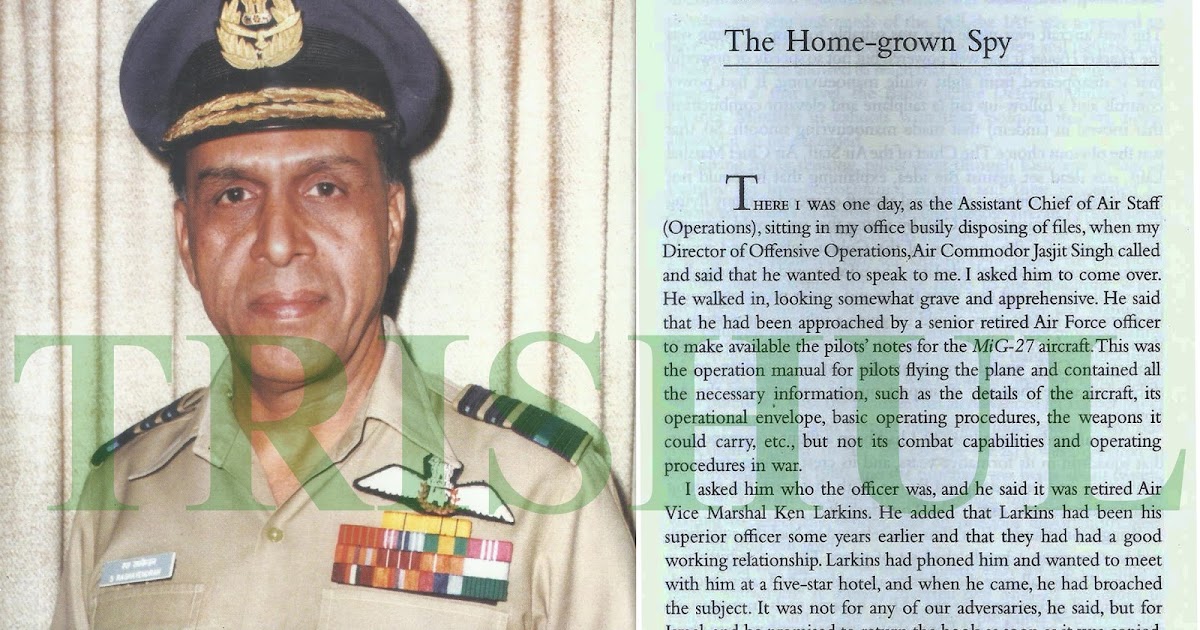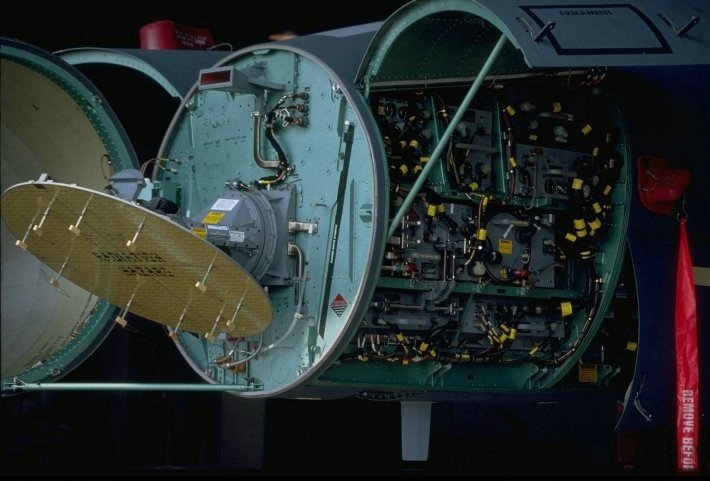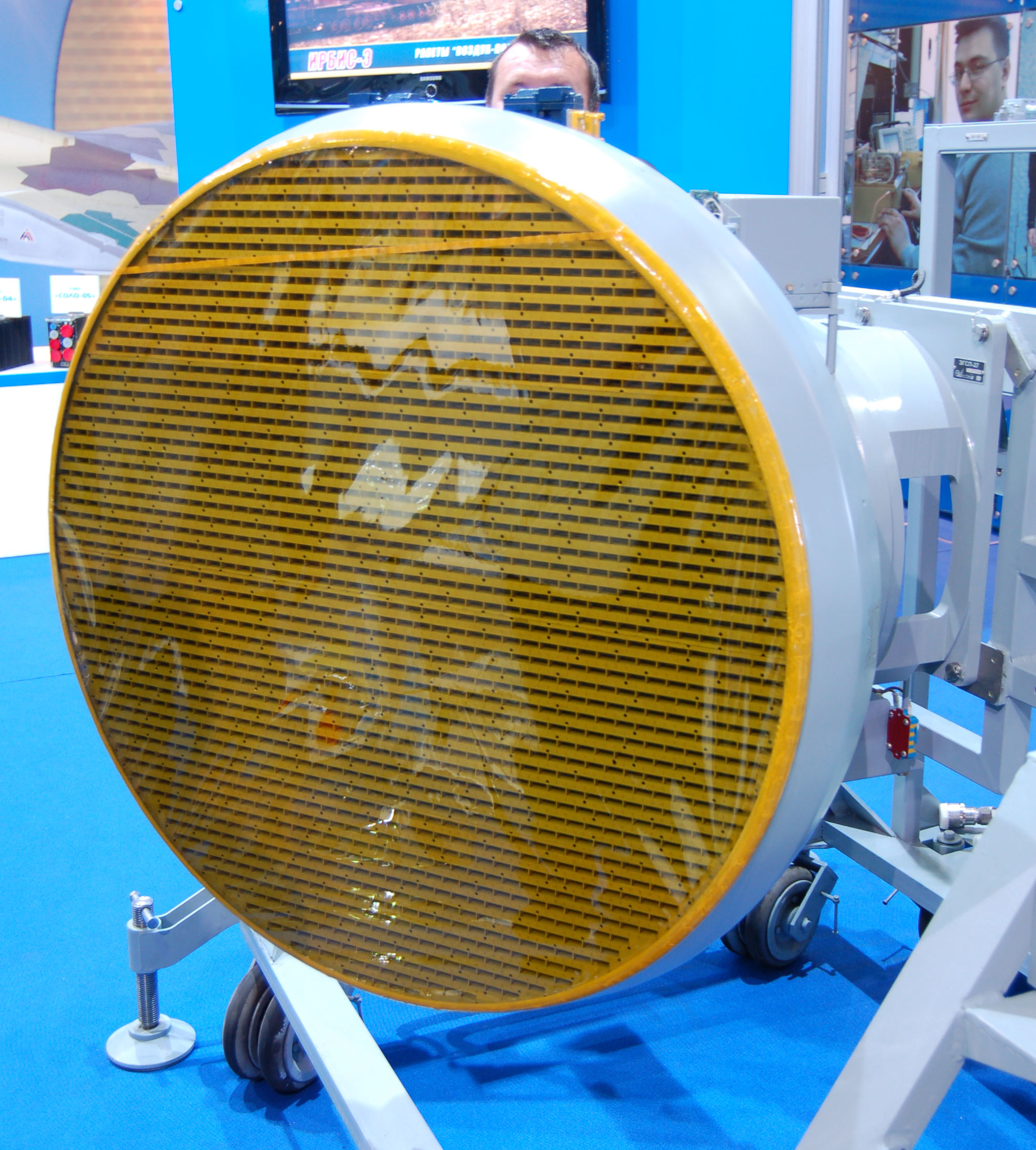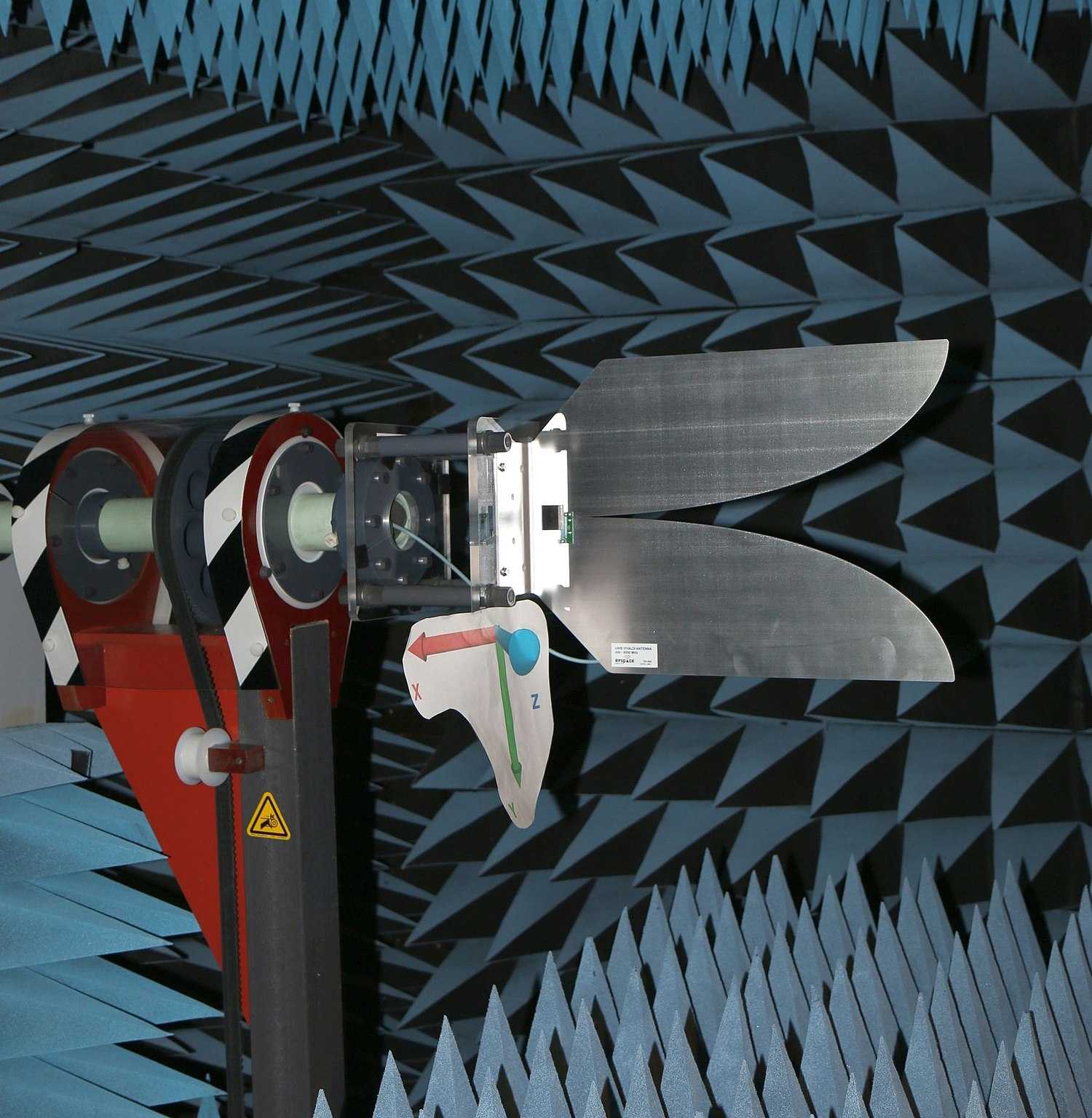Thanks for the pointer about the different antenna element types, I was not aware of this. I assume you have determined the Irbis uses the patch type just visually as there's no source. Personally I can't see an image of Irbis detailed enough to determine that.
This is already well noted.
Irbis-E
Here's a close up of RBE2 AA . Look at those crab like antenna that's clear TSA...
Here's a TSA/ Vivaldi antenna close up
Anyway, a few points:.
1. The difference in ECCM/LPI capabilities between Irbis-E and something like an APG-82 isn't because they use patch vs TSA/notch type.
It is....to do LPI, radars uses agile frequency hopping + Ultra wide bandwidth and some more...
LPI measures include:
- Power management and high duty cycle, meaning the transmitter is on most of the time (long integration times)
- Wide bandwidth (or Ultra-wideband)
- Frequency Agility, and frequency selection
- Advanced/irregular scan patterns
- Coded pulses (coherent detection)
- High processing gain
- Low sidelobe antennas

en.wikipedia.org
The bolded part have anything to do with the antenna type manufacturers chose.
Advantages of Vivaldi / TSA antennas are their broadband characteristics (suitable for ultra-wideband signals
https://www.wikiwand.com/en/Vivaldi_antenna
It's because it's a PESA vs AESA comparison which is not apples to apples. AESAs have inherently better ECCM/LPI capabilities than PESAs for a variety of reasons. This still doesn't make PESAs handicapped or useless by any stretch. (side note: I have a feeling that the AESA vs PESA debate is exaggerated a bit because western fighters (esp. USA) mainly went from MSAs straight to AESAs,
In fighter jet yes, because its just so damn good, they jumped straight ahead to AESA. But the U.S does have experience with PESA onboard combat jets.
There's a lot of explanation why air force jumped straight away to AESA, but mainly due to longer range, higher accuracy, lower intercept probability, better ECCM, lower noise etc.
which is a massive jump, and equate PESAs with MSAs because they're not the latest and greatest. Even though PESAs have all the advantages over MSAs that AESAs have, just to a lesser extent. But... I digress)
Not quite, the difference between AESA to PESA is more extreme when it comes to MSA and PESA. As I've noted earlier, the PESA IRBIS-E (3m) is no more advanced in SAR resolution than MSA APG-70(2.5m) from the 80s. And again SAR resolution is directly proportional to a radar’s bandwidth, which greatly determines the radar’s jamming resistance (ECCMs).
It does have a little faster scanning rate yes true, but everywhere else is is deficient.
2. The differences in antenna element type seem to mainly affect radar range, which in the case of the Irbis would be overcome by sheer brute force of the transmitter - 5kw avg power and 20kw peak power
It is quite powerful yes. NIIP (the manufacturer of IRBIS) claimed 350 km detection range against 3 m^2 target,.
But it is on a very narrow deg x deg cued search
V. Tikhomirov Research Institute of Instrumentation provides for the assured detection and acquisition of typical aerial targets at a range of up to 200 km (up to 170 km against ground background), and in a narrower field of view¬ – up to 350-400 km.
Read here more about the Super Sukhoi upgrade for the IAF Su-30 MKI and why that is an ideal approach relative to other similar aircrafts.

alphadefense.in
its hard to imagine an increase in situational awareness with narrow field of view cued search. Especially when you have no AWACS. If the Su-35 would do volume search the range dropped dramatically. Oh one more thing, turn on your radar, you emit radar signal, your EMCON will be severely compromised especially with the antenna characteristics used by the IRBIS-E. Modern ESM are already so good and so accurate, passive detection could be a primary means to detect opposition, especially because they "sniff" at longer range than active sensors.
And that is just the radar deficiency on the Su-35 relative to near competitor in the middle east. We have yet to talk about its OLS-35, its Khibiniy ECM, its weapons carriage compared to similar analogues already fielded by the neighboring countries.
Its hard to imagine the Su-35 coming out on top if their assigned mission is air superiority attempt like you mentioned...
but in the mean time Su-35 would have the home advantage of operating within/close to Iran's own IADS which would help level the playing field in terms of situational awareness.
Again as impressive as ground based IADS is, it is in no way able to give airmen the same "god eye view" that AWACS give to pilots. Especially in contested airspace. You yourself mentioned how mountainous terrain handicapped radar view. In short it helps yes, but its not going to be level, and depending on the size and sophistication of enemies, it will just be time that determines how long the IADS and its radars will survive.
There's already a lot of real life example where ground based IADS and sensors getting wiped out by superior air force with AWACS.


















